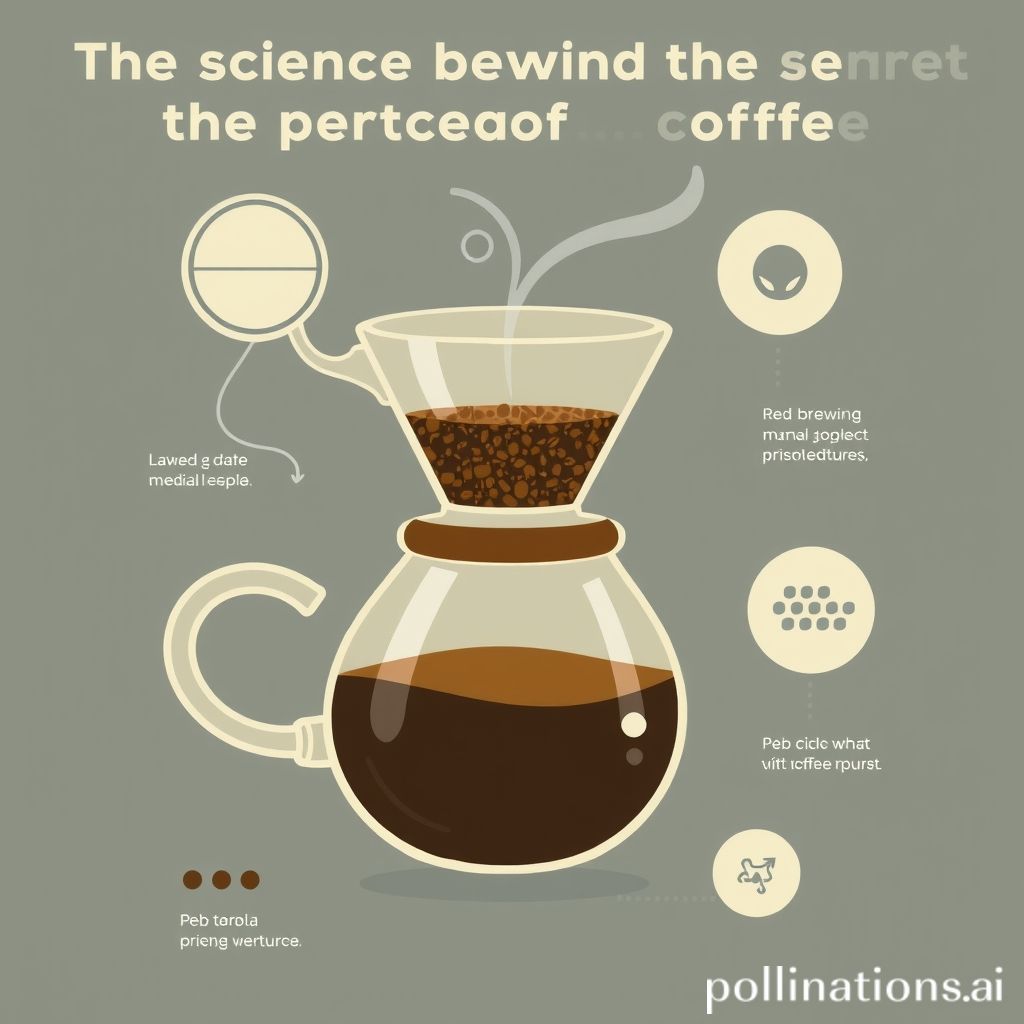
The science behind brewing the perfect cup of coffee
Unlocking Coffee Alchemy: The Science Behind the Perfect Brew
Hey coffee lovers! Ever wonder why that cup from your favorite cafe tastes so much better than what you brew at home? It's not just magic, it's science! Brewing the perfect cup of coffee is a delightful dance between art and scientific principles. Let's delve into the fascinating world of coffee extraction and discover the secrets to achieving coffee nirvana.
The Bean: More Than Just a Seed
Our journey begins with the coffee bean itself, the humble seed of the coffee plant. Different varieties like Arabica and Robusta offer distinct flavor profiles due to their unique chemical compositions. Arabica, known for its smoother, more aromatic qualities, boasts higher acidity and lower caffeine content. Robusta, on the other hand, packs a stronger, more bitter punch with a higher caffeine kick.
The roasting process is where the magic truly unfolds. As beans are heated, a complex series of chemical reactions occur, developing hundreds of aromatic compounds. These compounds contribute to the coffee's distinctive flavor notes, ranging from fruity and floral to chocolatey and nutty. Light roasts tend to retain more acidity and brighter flavors, while darker roasts develop bolder, smokier profiles.
Grind Size Matters: Surface Area is Key
The grind size you choose dramatically impacts the extraction process. A coarser grind exposes less surface area to the water, resulting in underextraction and a weak, sour cup. Conversely, a fine grind offers excessive surface area, leading to overextraction and a bitter, astringent brew. Finding the sweet spot, a grind size appropriate for your chosen brewing method, is crucial.
Consider this comparison:
| Grind Size | Surface Area | Extraction Rate | Resulting Flavor | Brewing Method |
||||||
| Coarse | Low | Slow | Weak, Sour | French Press, Cold Brew |
| Medium | Moderate | Moderate | Balanced | Drip Coffee Maker |
| Fine | High | Fast | Bitter, Astringent | Espresso |
Water: The Unsung Hero
Water, often overlooked, constitutes over 98% of your final cup. Using filtered water is essential to remove impurities that can negatively impact the coffee's flavor. The ideal water temperature for brewing is between 195 and 205 degrees Fahrenheit (90-96 degrees Celsius). This temperature range allows for optimal extraction without scorching the coffee grounds.
The Art of Extraction: Finding the Sweet Spot
Extraction is the process of dissolving soluble compounds from the coffee grounds into the water. Under extraction occurs when not enough of these compounds are dissolved, resulting in a sour, weak brew. Over extraction happens when too many compounds are dissolved, leading to a bitter, astringent taste.
The goal is to achieve balanced extraction, where the coffee is neither under nor over extracted. Several factors influence extraction, including:
Grind Size: As mentioned earlier, grind size affects surface area and extraction rate.
Water Temperature: Too low and extraction will be slow and incomplete; too high and you'll extract bitter compounds.
Brew Time: Longer brew times lead to greater extraction.
Water to Coffee Ratio: Using too little coffee results in underextraction, while using too much can lead to overextraction.
Brewing Methods: A World of Possibilities
Different brewing methods employ varying techniques to achieve extraction. Immersion methods, like the French press, involve steeping the coffee grounds in water for a specific period. Pour over methods, like the Hario V60, rely on gravity to filter water through the coffee grounds. Espresso machines use pressure to force hot water through finely ground coffee. Each method offers a unique flavor profile, influenced by its specific parameters.
Tamping and Pressure: The Espresso Equation
Espresso, known for its concentrated flavor and creamy crema, requires a precise combination of tamping and pressure. Tamping involves compressing the coffee grounds evenly in the portafilter to create a uniform resistance to the water flow. Applying the correct pressure, typically around 9 bars, ensures optimal extraction and a rich, flavorful shot.
Finding Your Perfect Cup: A Personal Journey
Ultimately, brewing the perfect cup of coffee is a personal journey of exploration and experimentation. Play around with different beans, grind sizes, brewing methods, and water temperatures to discover what suits your taste. Keep meticulous notes of your experiments, noting the parameters you used and the resulting flavor profile. You can then adjust your process based on these notes.
It's funny, I used to think coffee was just coffee. Now, armed with a bit of understanding of the underlying science, I appreciate the nuances of each cup so much more. I remember one particular experiment where I adjusted the water temperature by just a few degrees and the difference in the final flavor was remarkable. That's when it truly clicked: brewing coffee isn't just a routine, it's a fascinating exploration! So go ahead, embrace the science, and unlock the secrets to your perfect brew. Happy brewing!
Comments
Post a Comment